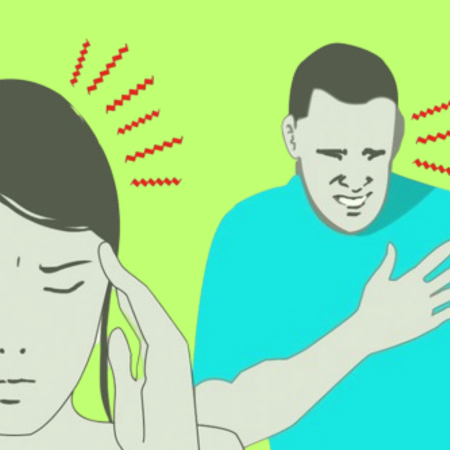The Best Exercises Everyone Over 50 Should Be Doing
Introduction
As we age, maintaining an active and healthy lifestyle becomes increasingly important. Regular exercise plays a crucial role in promoting physical and mental well-being for people over 50. However, it’s essential to choose exercises that are safe, effective, and tailored to the specific needs of this age group. In this article, we will explore the best exercises that everyone over 50 should be doing to stay fit, strong, and flexible.
Benefits of Exercise for People Over 50
Regular exercise offers numerous benefits for individuals over 50. It helps improve cardiovascular health, maintain a healthy weight, increase muscle strength and bone density, enhance flexibility and balance, reduce the risk of chronic diseases, and boost mental well-being. By incorporating exercise into daily routines, older adults can enjoy a better quality of life and maintain independence as they age.
Key Considerations for Exercise
Before starting any exercise program, it’s important to consider a few key factors. First and foremost, consult with a healthcare professional to assess your overall health and receive personalized recommendations. It’s also crucial to choose exercises that align with your fitness level, taking into account any pre-existing conditions or injuries. Additionally, proper warm-up and cool-down routines, adequate hydration, and listening to your body’s signals are essential to ensure a safe and effective workout.
Cardiovascular Exercises
Engaging in regular cardiovascular exercises is vital for maintaining heart health and overall fitness. Activities such as brisk walking, cycling, swimming, dancing, and aerobics are excellent options for people over 50. Aim for at least 150 minutes of moderate-intensity aerobic exercise per week, or 75 minutes of vigorous-intensity exercise, spread throughout the week.
Strength Training Exercises
Strength training is crucial for preserving muscle mass, improving metabolism, and maintaining functional strength. Incorporate exercises that target major muscle groups, such as squats, lunges, push-ups, and bicep curls. Aim for two to three sessions per week, allowing for adequate rest between workouts. Start with light weights or resistance bands and gradually increase the intensity as your strength improves.
Flexibility and Balance Exercises
Maintaining flexibility and balance becomes increasingly important with age to prevent falls and injuries. Incorporate exercises like yoga, tai chi, and Pilates into your routine to enhance flexibility, stability, and body awareness. These activities promote joint mobility, core strength, and coordination. Remember to start with beginner-friendly classes or modifications and progress gradually.
Low-Impact Exercises
Low-impact exercises are gentle on the joints, making them suitable for people with joint pain or arthritis. Walking, swimming, water aerobics, cycling, and using elliptical machines are excellent choices. These activities provide cardiovascular benefits while minimizing stress on the joints. However, it’s still important to use proper form and technique to avoid any undue strain.
Exercises for Joint Health
Maintaining joint health is crucial for older adults. Incorporate exercises that specifically target joint mobility and flexibility. Range-of-motion exercises, such as shoulder circles, ankle rotations, and wrist stretches, can help improve joint function and reduce stiffness.
Exercises for Bone Health
As we age, bone density naturally decreases, increasing the risk of osteoporosis and fractures. To promote bone health, incorporate weight-bearing exercises into your routine. Walking, jogging, hiking, dancing, and stair climbing are excellent options. These activities stimulate bone growth and help maintain bone density. Additionally, consider including resistance exercises using weights or resistance bands to further strengthen bones and muscles.
Exercises for Mental Well-being
Exercise not only benefits the physical body but also plays a significant role in mental well-being. Engaging in activities like walking in nature, practicing yoga or meditation, and participating in group exercise classes can help reduce stress, improve mood, and boost cognitive function. Regular exercise releases endorphins, which are known as “feel-good” hormones, and promotes better sleep, leading to overall improved mental health.
Customizing an Exercise Routine
Every individual is unique, and it’s important to customize an exercise routine that suits your specific needs and preferences. Consider factors such as your current fitness level, any existing health conditions, and your personal goals. If you’re unsure where to start, working with a certified fitness professional or personal trainer can help you create a tailored exercise plan that addresses your specific needs and ensures proper technique.
Tips for Getting Started
Starting a new exercise routine can feel daunting, but with the right approach, it can be enjoyable and rewarding. Here are some tips to help you get started:
- Set realistic goals: Start with small, achievable goals and gradually increase the intensity and duration of your workouts.
- Find activities you enjoy: Choose exercises that you find fun and enjoyable to stay motivated and engaged.
- Start slow and gradually progress: Allow your body time to adapt and avoid pushing yourself too hard too soon. Progress gradually to avoid injuries.
- Stay consistent: Consistency is key to achieving long-term results. Aim for regular workouts and make exercise a part of your daily routine.
- Listen to your body: Pay attention to how your body feels during and after exercise. If something feels uncomfortable or painful, modify or stop the exercise and consult a professional if needed.
Common Mistakes to Avoid
When starting an exercise program, it’s important to be aware of common mistakes to ensure safety and maximize results. Some common mistakes to avoid include:
- Skipping warm-up and cool-down: Always start with a proper warm-up to prepare your muscles and joints for exercise and end with a cool-down to help your body recover.
- Overtraining: Giving your body enough time to rest and recover is crucial. Overtraining can lead to injuries and burnout.
- Neglecting proper form: Using correct form during exercises is essential to prevent injuries and ensure effectiveness. If you’re unsure, seek guidance from a professional.
- Not listening to your body: It’s important to respect your body’s limits and avoid pushing through pain or discomfort. If something doesn’t feel right, modify or stop the exercise.
- Focusing on a single type of exercise: Incorporate a variety of exercises into your routine to engage different muscle groups and prevent boredom.
Tracking Progress and Staying Motivated
Tracking your progress can help you stay motivated and see how far you’ve come. Keep a workout journal, use fitness apps, or invest in wearable fitness trackers to monitor your activity levels, heart rate, and other relevant metrics. Celebrate your achievements and milestones along the way to maintain motivation and make exercise a lifelong habit.
health, bone health, and mental well-being, you can experience numerous benefits. These include improved cardiovascular health, increased strength and flexibility, better bone density, reduced risk of chronic diseases, enhanced mental well-being, and overall improved quality of life.
Remember, it’s important to consult with a healthcare professional before starting any new exercise program, especially if you have any pre-existing health conditions or concerns. They can provide personalized recommendations and guidance based on your specific needs.
So, whether you prefer a brisk walk in the park, a yoga class, or lifting weights at the gym, finding exercises that you enjoy and that suit your fitness level is key. Start slow, progress gradually, and listen to your body. Consistency and patience are key to achieving long-term results.
Remember, it’s never too late to start prioritizing your health and well-being. By incorporating these exercises into your daily routine, you can age gracefully, maintain your independence, and enjoy an active and fulfilling life.
FAQs (Frequently Asked Questions)
- Q: Can I start exercising if I haven’t been active for a long time? A: Absolutely! It’s never too late to start exercising. Begin gradually and listen to your body. Consulting with a healthcare professional is recommended to ensure a safe and effective exercise program.
- Q: How often should I exercise? A: Aim for at least 150 minutes of moderate-intensity aerobic exercise or 75 minutes of vigorous-intensity aerobic exercise per week. Additionally, incorporate strength training exercises two to three times per week.
- Q: Are there any exercises I should avoid as I get older? A: While exercise is generally beneficial, it’s important to avoid high-impact activities that may put excessive stress on your joints. It’s also crucial to consider any pre-existing health conditions and seek guidance from a professional if needed.
- Q: Can exercise help with joint pain and arthritis? A: Yes, exercise can help manage joint pain and arthritis. Low-impact exercises, such as swimming and cycling, are gentle on the joints, while strength training can improve joint stability. Consult with a healthcare professional for personalized recommendations.
- Q: How long will it take to see results from exercise? A: Results vary depending on various factors, including your starting point, consistency, and effort. Stay committed, be patient, and remember that every small step you take is a step towards a healthier and fitter you.


